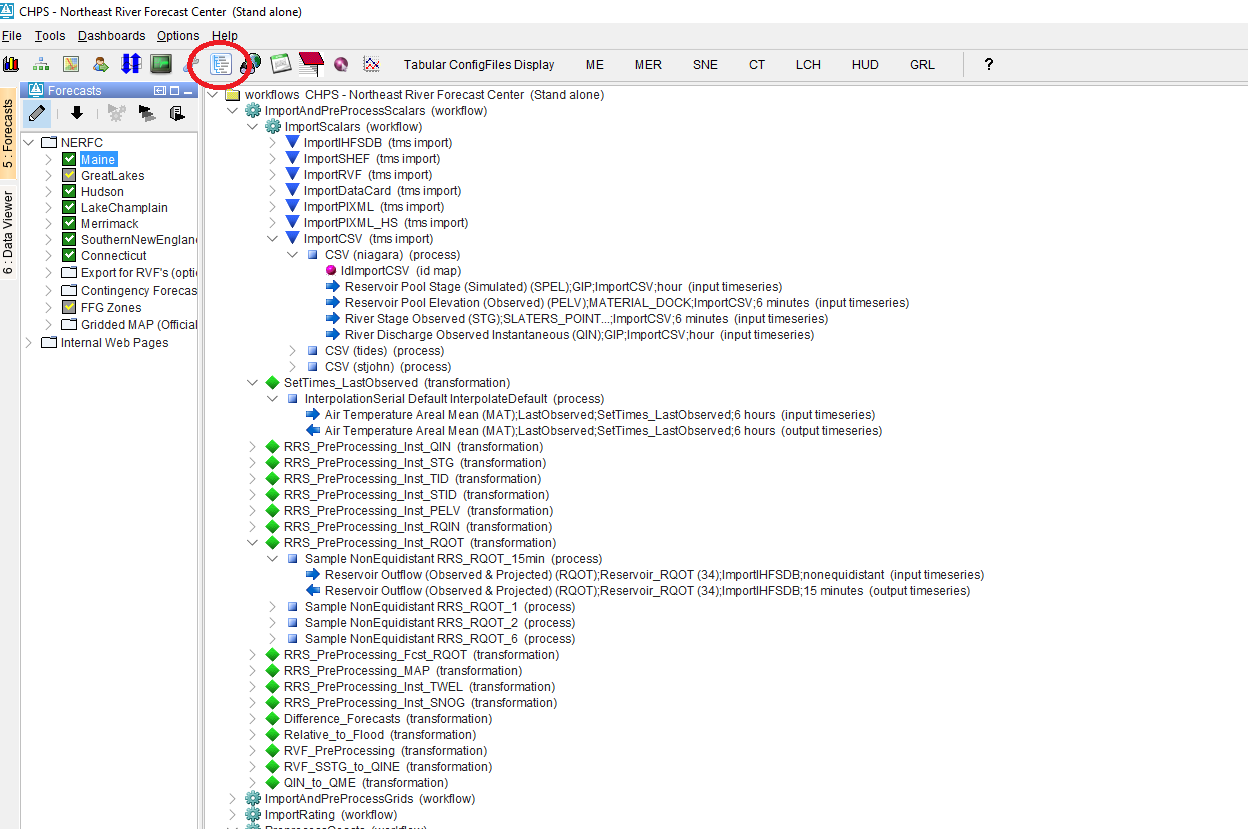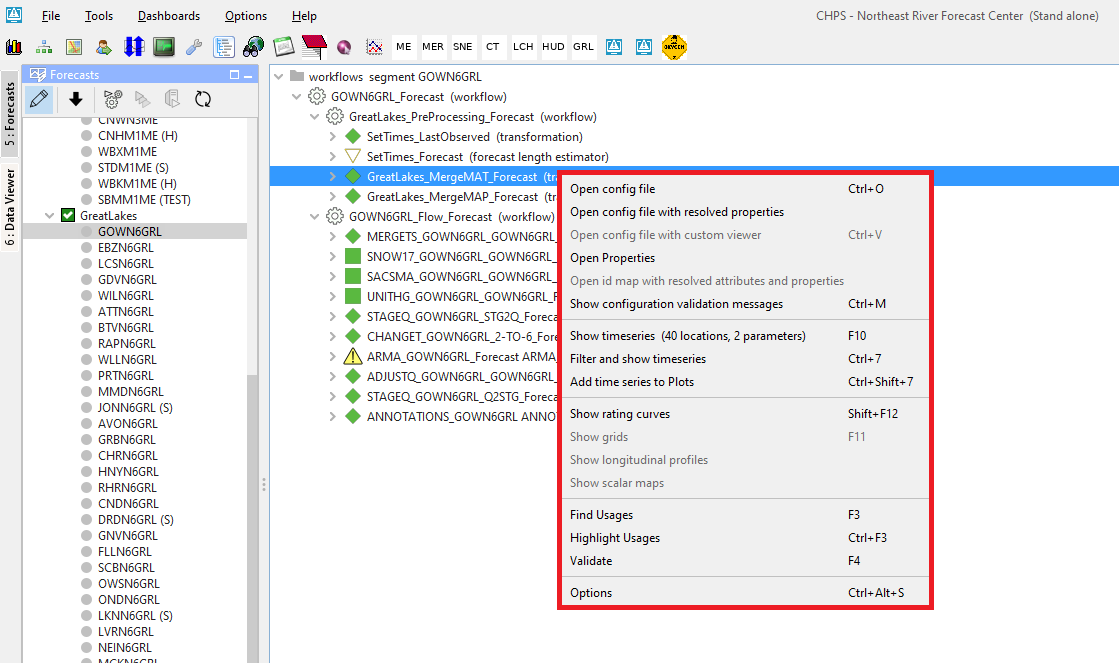Introduction
The Workflow Navigator (WN) is a helpful tool for understanding the hierarchical structure of your workflows and all underlying modules, module-instances and incoming/outgoing timeseries. It can also highlight the usage of specific timeseries throughout your config so that you can 'trace' where data is produced and (re)used. The WN displays workflows in a clickable tree-structure so you can navigate and drill down into a workflow towards timeseries level and even inspect the series in a graph or spatial plot.
Opening the Workflow Navigator
The Workflow Navigator (WN) can be started in two ways.
- From the Delft-FEWS Explorer - Map, use the <F12> menu + select option "K"
- From the Delft-FEWS Explorer Taskbar, when configured as an <explorerTask>
Ad 1. Starting WN from the <F12> menu
When you start the WN from the <F12> menu, all available (visible) workflows will be visualised in the tree-structure. The WN itself opens in a "Worflow Navigator" Tab and can be (un)docked like all other tabs.
Ad 2. Starting WN from the Taskbar
When you start the WN from the Explorer taskbar it will 'listen' to the selected workflow in e.g. your topology (forecast tree). Only that workflow will then be visible in the Workflow Navigator tab.
Logging
All relevant logging will appear in the Delft-FEWS Explorer log panel. From version 2018.02 (and higher) the log panel has been removed from the Workflow Navigator tab and is now centrally available in the Delft-FEWS Exporer log panel.
Usage of the Workflow Navigator
Workflows in a tree-structure
The Workflow Navigator (WN) displays the structure of the workflows in a clickable tree-structure. By selecting the nodes of this tree, it expands and underneath the different parts (steps) of the workflow(s) will be recognizable based on its confuration files. Drilling down into this structure, the user is enabled to see all the different (related) configuration files (and inspect them) even down to the input and output timeseries of individual 'steps' of the selected workflow.
When you hover over a node in the structure, the tooltip displays the corresponding configuration file and even displays additional information for transformation elements (when configured in the <description>)
Icons
In the clickable tree-structure different icons are used. The table below explains the different icons used.
| Icon | Description |
|---|---|
| Workflow (general) | |
| Timeseries import module | |
| General adapter module | |
| Transformation module | |
| Error module | |
| Threshold event crossing module | |
| Forecast length estimator module | |
| Process (any) | |
| Unit conversion (process level) | |
| Id mapping (process level) | |
| Module parameters (process level) | |
| Input timeseries (process level) | |
| Output timeseries (process level) |
Context-menu options
When you open the Workflow Navigator (WN) , select a certain node and press the right mouse button, the context menu will be visible.
Depending on the hierarchy in the structure and node-type different options are available. Below mentioned table explains the different options.
| Context-menu option | Shortcut | Functionality |
|---|---|---|
| Open config file | Ctrl+O | Opens the corresponding configuration file (in a text-editor) |
| Open config file with custom viewer | Ctrl+V | Opens the corresponding configuration file (in a custom viewer) - Module parameters only |
| Open properties | Shows the values of the configured properties (variables between $-characters in a configuration file) | |
| Show messages | Ctrl+M | Shows the messages of the selected item |
| Show timeseries (n locations, m parameters) | Ctrl+6 | Opens a Timeseries dialog (TSD) for all n locations and m parameters in one plot |










